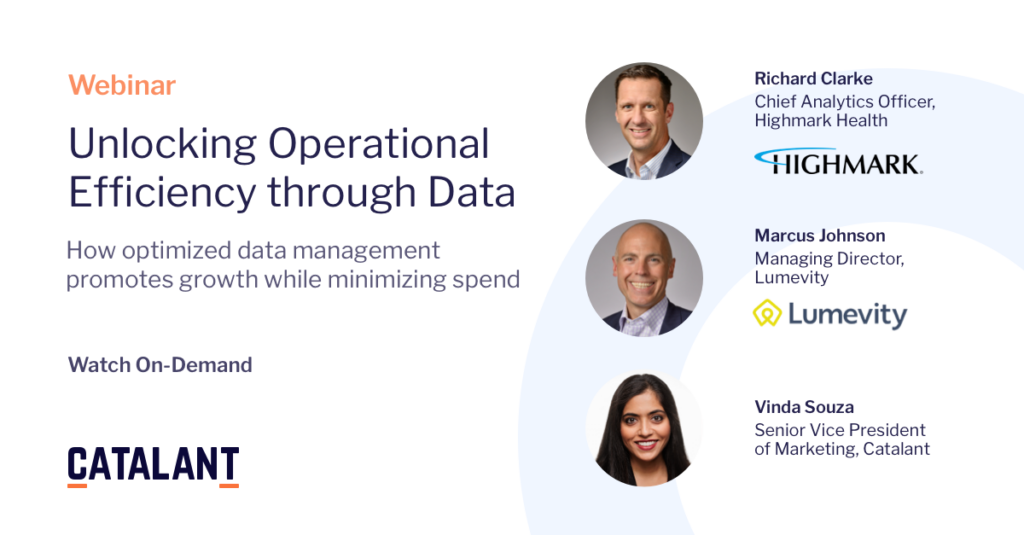3 Data Management Best Practices Lumevity Uses to Improve Business Operations
Data management may seem like a buzzword. But at Highmark Health, it’s a key business tenet. Knowing how to manage and deploy data across projects and teams isn’t overhead, it’s an opportunity to improve operational efficiency through budgetary management, long-term planning, and flexible resourcing.
3 Data Management Best Practices
Here are three of the data management best practices that Highmark Health and its subsidiary Lumevity use to improve business operations.
1. Treat analytics as a product.
Highmark Health doesn’t consider its data as operational overhead. According to Richard Clarke, Chief Analytics Officer, data and analytics are considered one of the company’s products. This positioning avoids the technical debt created by thinking about data governance as a one-off situation, rather than a continual, iterative system. Positioning data as a product also necessitated changes to the enterprise’s staffing and operational model.
One of these shifts required a new approach to managing resources. So, Highmark Health stood up what it calls an “Analytic Product Investment Board.” The board has an overarching view of all analytic activities and the financial budgets that support them. This board is charged with making decisions about investing (or divesting) resources in a more agile way than annual budgeting processes. Clarke explained that this is because operational success depends on the ability to flow money to things that are working and take money from things that aren’t more rapidly than an annual budget allows.
2. Don’t ignore long-term investments in data governance.
Thinking about data as a product also helps predict a common pitfall Clarke sees: thinking of data management projects as short-term solutions rather than long-term operational investments. While he acknowledges that uncertain economic conditions force some organizations to be more conservative with resource allocation, Clarke feels it’s important that firms understand the operational cost of deferring data governance and management.
His advice to ensure that investments in data-focused projects are seen as long-term benefits to an organization is to get others to buy into data as a resource, not a cost center. “You need to make sure that the conversation is more about impact in business capabilities versus being seen as an efficiency tactic,” Clarke explained. “The amount of progress you make is many orders of magnitude greater when you start thinking about the business capabilities you can unlock if you make required investments to make data more liquid.”
3. Look outside full-time hires for resources where needed.
Because Highmark Health considers data to be a product, analytics product owners are charged with projects and deliverables for internal and external clients–but Clarke isn’t particular in who his teams use to accomplish the work. “I tell them that I’m holding you accountable for the end outcome of your product, but how you get there is up to you.”
For some projects, product owners may use internal resources that directly report to them, but for many, that’s not the case – especially when the project requires a hard-to-find skill set. In those cases, the product owners turn to Catalant to support the project. Highmark Health product owners also will use Catalant for analytics-heavy projects, largely due to resourcing constraints and delivery timelines. For projects in proof-of-concept phases, this approach allows the projects to move faster, and more efficiently because there is less ramp-up time.
These three data management approaches help power Highmark Health’s business strategy. Data management is one of several enterprise-wide solutions contributing a transformation effort at Highmark Health’s that’s achieved $1B in value realization in four years. The success of the transformation led to Lumevity, a subsidiary providing the same transformation solutions to other companies.
Want to watch the complete webinar recording?
